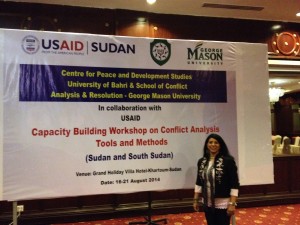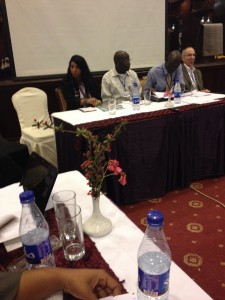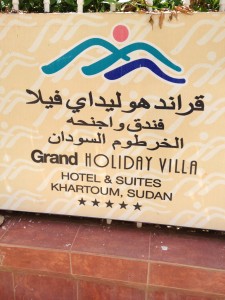South Sudan: the Forgotten Crisis in Jonglei State
Thursday, 16 October 2014, 12:17 pm
Press Release: HelpAge International
South Sudan: the Forgotten Crisis in Jonglei State
Nairobi, 15 October 2014 – Jonglei State has the highest number of internally displaced people and the highest level of food insecurity and malnutrition in famine-threatened South Sudan, according to a joint assessment by HelpAge International and Islamic Relief Worldwide.
1.3 million people remain internally displaced across South Sudan. According to UNOCHA, there are about 790,000[1] Internally Displaced Persons (IDPs), as of August 2014, in Jonglei State alone. Of those, it is estimated that at least 63,000 are older men and women.
Over 450,000 South Sudanese have been forced to seek refuge in neighbouring countries such as Ethiopia, Kenya, Sudan and Uganda.
The joint assessment shows that most vulnerable people including people with special needs such as older people, children, and pregnant and lactating mothers have been hit the hardest by the first major crisis since South Sudan became the world’s newest independent nation. Older people have found it difficult to flee due to mobility problems and many have been killed as a result.
Food is becoming scarce as stocks have been exhausted, looted or shared amongst vulnerable communities. Many people are still afraid to cultivate their land because they were uncertain about the future, forcing even those that have returned home into dependency on government rations.
Waterborne diseases, such as cholera and typhoid, from contaminated water are an increasing risk, particularly as 80% of the population depend on water from boreholes, according to the Ministry of Water and Sanitation in Jonglei State. Anestimated 35% ofboreholes have been destroyed.
Crowded conditions, shared facilities, open defecation and poor waste management remain major problems within the refugee site at Bor.Lack, and the land around the refugee camps has made it difficult to dig adequate pit latrines. People have been forced to share beyond the capacity allowed (over 60 people per pit latrine)[2]. The pit latrines have been dug close to shelters (radius of 20metres[3]). However, men and women do have access to separate toilets. Existing pit latrines were also reported not to be age-appropriate. Both older people and people living with disabilities are finding them difficult to access.
“I just want to go back home,” says Peter*, an older man at the UNMISS Bor Protection of Civilians (PoC) camp. “At least when at home, I am able to cultivate some crops or even look after my livestock.”
Acute respiratory infections, communicable diseases, diabetes, and high blood pressure, are the most common ailments affecting both older men and women. Many health facilities have been destroyed, while those remaining do not have enough medical stocks– forcing people to use traditional herbs instead.
The lack of psychosocial and counselling services has been identified asa significant issue, as rape has been reported among both young and older women – in some cases, used as a tool for survival to access passage or safety.
“We just want peace to come so that we can go back to our ways, like the cultivation we used to do,” says Akur, an older woman living at Luedir Village in Bor.
“At the moment, we are afraid to cultivate because we are not certain about the future. If there is peace, we would cultivate our farms.”
Islamic Relief’s East Africa Regional Director, Yusuf Ahmed, says: “The situation in South Sudan is amongst the most grave in the world today. Millions face starvation, and many have been driven from their homes. Jonglei is one of the worst affected areas.
“Despite the scale and depth of the crisis, humanitarian programmes remain hugely underfunded. Much more is needed to enable organisations like Islamic Relief and HelpAge to get vital aid to those that need it the most.”
“Older people are often forgotten in emergencies. There is need for interventions that cater for older people in such situations,” says Prafulla Mishra, HelpAge International East, West and Central Africa Regional Director.
HelpAge International is providing non-food items (NFIs) such as blankets, mosquito nets, mattresses, plastic mats and washing soap to older people who have been displaced by the conflict in Juba. HelpAge is also offering Helping Older People in Emergencies (HOPE) training for humanitarian agencies in Juba, aimed at assisting them in ensuring that their programmes include older people; and that they develop an understanding of how to put age-sensitive programming into practice.
Islamic Relief is delivering urgent aid in South Sudan, with emergency teams responding since the outbreak of fighting in December 2013. Its relief effort includes distributing food and essential medical supplies and mosquito nets – as well as hygiene kits and shelter supplies. Islamic Relief has also constructed wells, latrines and bathrooms.




Recent Comments